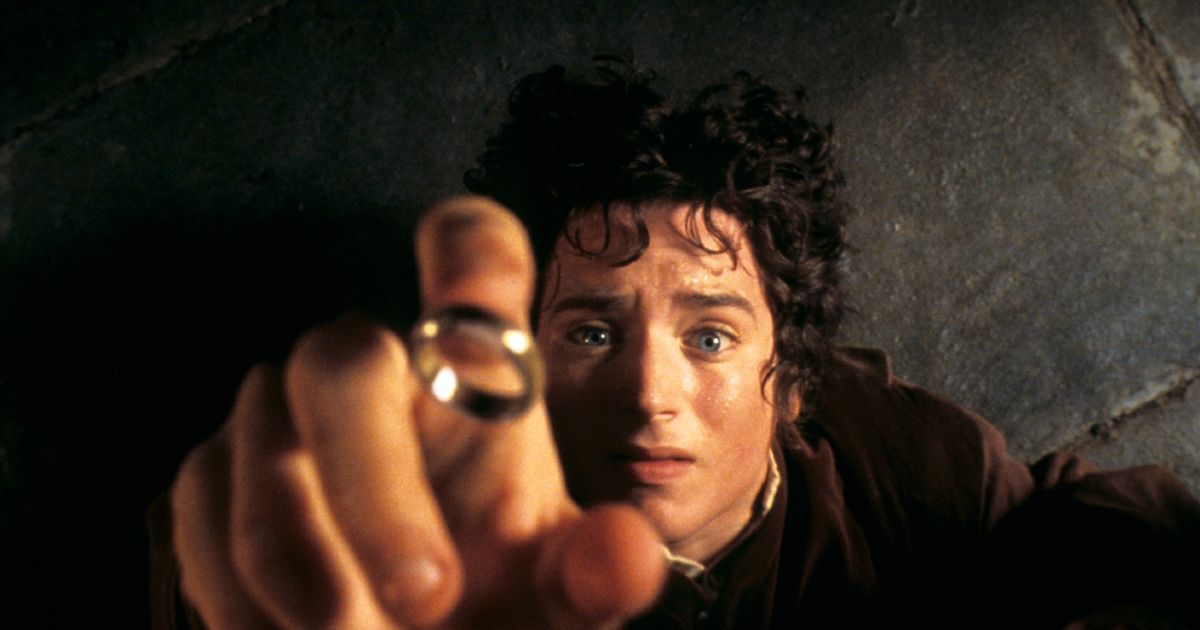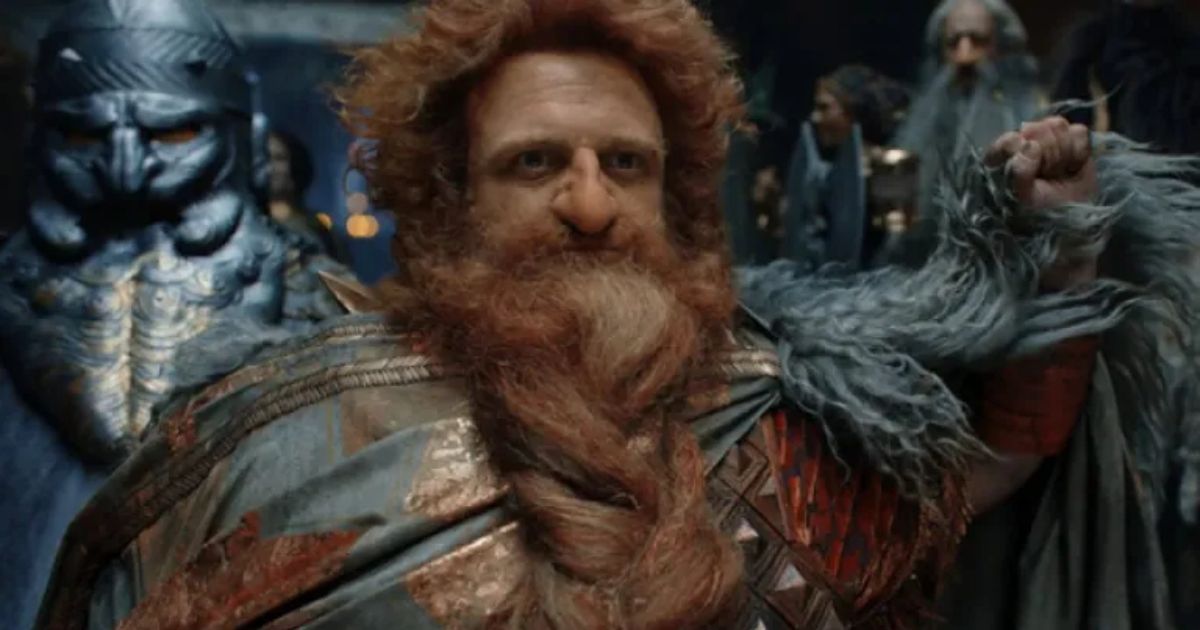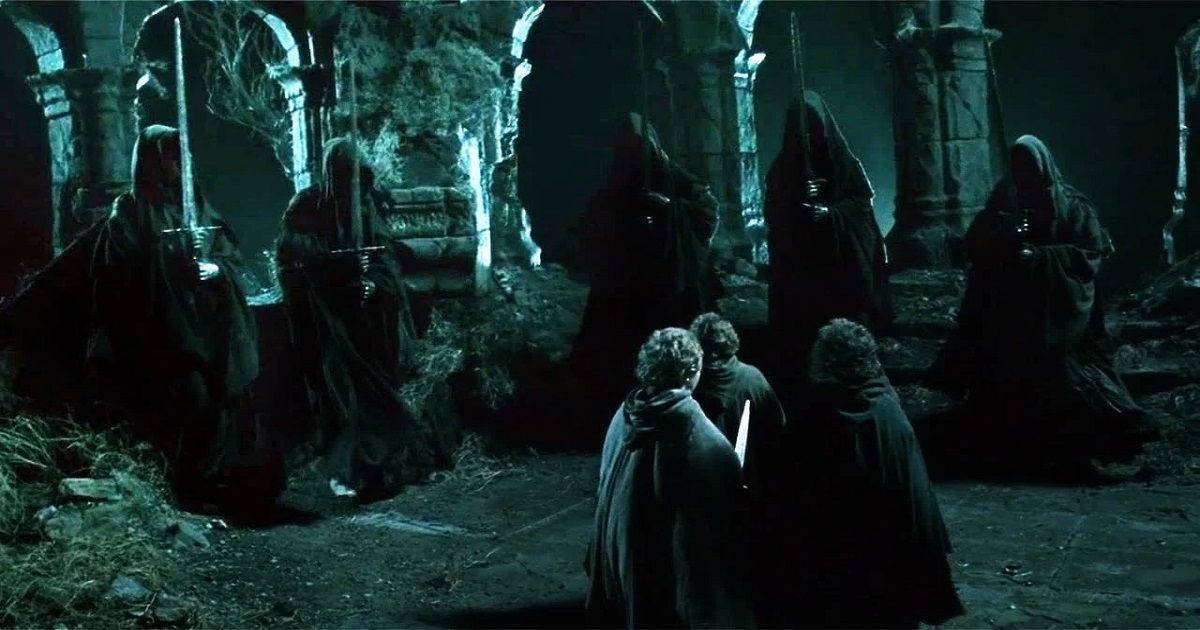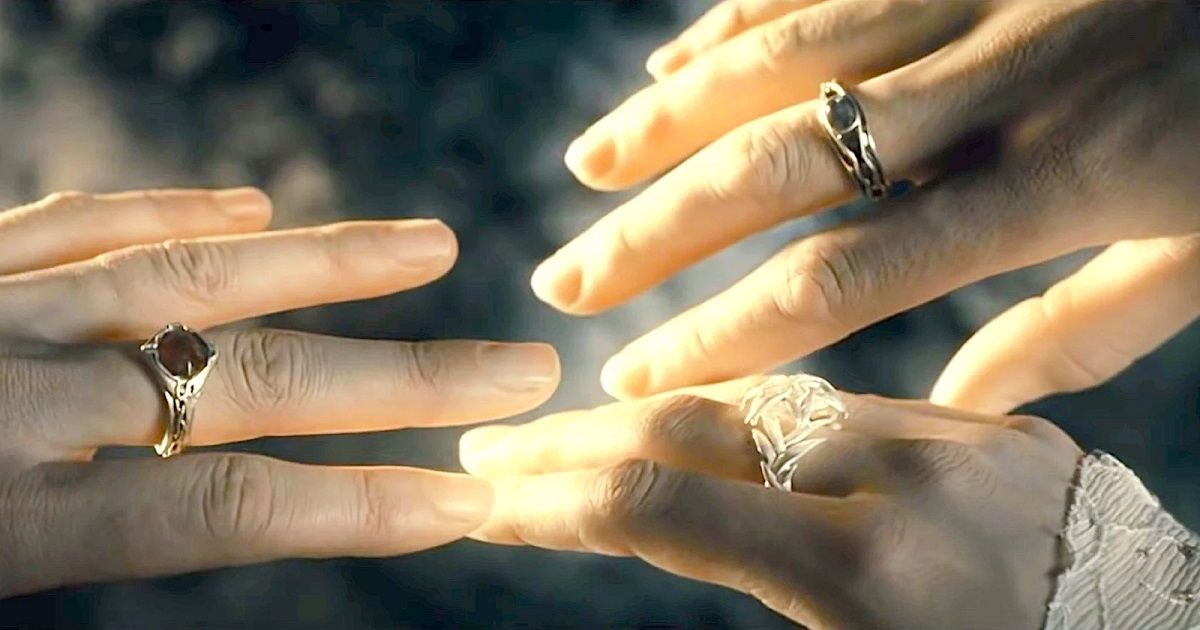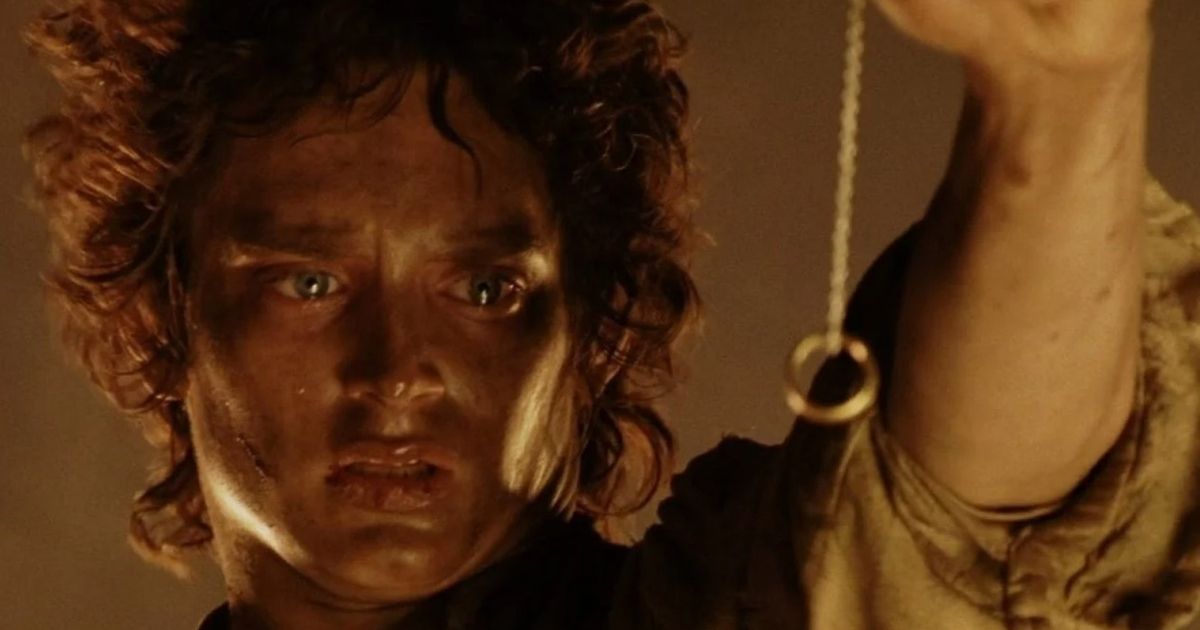After expanding on the Lord of the Rings on-screen franchise as we know it, exploring more deeply the fictional setting of Middle-earth, and premiering with a record-breaking debut, Prime Video's The Rings of Power season 1 has ultimately come to its cliff-hanging end. The concluding moments of the show — spoiler alert! — introduce to the audience the three most powerful Rings forged by the Elves in the Second Age of Middle-earth (though less powerful, of course, than the One Ring that dark lord Sauron possesses). That said, the first installment of The Rings of Power merely paints part of a larger story, particularly when it comes to the number of Rings that were actually forged in the Second Age of the Lord of the Rings lore.
Interestingly, as recited in the closing poem of The Ring of the Power s season finale, and on the epigraph of J.R.R. Tolkien’s Lord of the Rings novels, in total, 20 rings were forged by Elf-smith Eregion (via Tolkien Gateway). Specifically, three rings were held by Elves, nine rings were worn by Men, seven rings were possessed by Dwarves, and lastly, Sauron held The One Ring. As we await The Rings of Power season 2, which is looking to be a long wait from now (via Den of Geek), here's a breakdown of how many Rings exactly were forged.
Seven Rings of Dwarves
Seven out of 20 magical rings of Middle-earth were divided among the major dwarf clans: Durin, Firebeards, Broadbeams, Ironfists, Stiffbeards, Blacklocks, and Stonefoots. The mightiest of these seven rings was given to King Durin Ⅲ of Khaza-dum by Celembrimbor. This ring, of course, remained in the House of Durin for thousands of years, and, later,, was inherited by Thror, the King under the Mountain.
That said, these seven rings were presented to each Dwarf Lord by Sauron to exert influence on them and discreetly bend them to his will. However, contrary to Sauron’s plans, the dwarves’ innate hardiness made them insular to several detrimental effects of these rings.
Of course, these rings lured them into piling treasure for themselves. And as fans are aware of Lord of the Rings lore, specifically The Hobbit trilogy, Bilbo Baggins' journey involved an encounter with the vast treasure collected by these dwarves. At the end of the day, the Seven Rings of Dwarves showered the possessor with immense wealth, which sadly also intensified their greed. Unsurprisingly, this greed then paved the way for their down, which, in essence, almost aligned with Sauron’s plan.
Nine Rings of Men
The Nine Rings of Men allowed humans to acquire riches, power, and eternal youth. However, they also corrupted the mortals in possession of them, so the men submitted to the malice of Sauron to become his evil servants. These nine ring-wielders in the Lord of the Rings franchise are introduced as Nazgul or Ringwraiths. Of these nine, the one character that has been talked about in greater length is the Witch-King of Angmar. In Tolkien's literature, the stronger Sauron became, the stronger the Witch-King turned. It is believed that the Witch-King's powers at some point equally matched Gandalf the White’s strength, which, no doubt, is scary.
Three Rings of Elves
The Rings of Power introduces three mysterious Rings of Elves. The Red Ring, or The Ring of Fire, was named Narya and was wielded by Cirdan, Lord of the Heavens of Mithlond. This Red Ring was, then, offered to Gandalf in the Third Age. Next, The Ring of Water, or The White Ring, was known as Nenya and was worn by Galadriel of Lothlorien. The ring’s power included concealing evil and preserving and protecting her from dark energies. Lastly, The Ring of Air, or The Blue Ring, was the greatest of three rings and was known as Vilya. Naturally, it was worn by Gil-Galad as he was considered the best fit during the ring distribution. However, upon Gil-Galad’s death in the War of the Last Alliance, Vilya was passed onto Elrond, who wore it in the Third Age. It is also well established that The Blue Ring somewhat had control over the other two rings because of its greatness.
The One Ring of Sauron
The One Ring, or The Ruling Ring, was perhaps the greatest of all and was forged by Sauron in Mount Doom. Appearance-wise, it was a simple golden ring with an Elvish incantation written along its side. Significantly, The One Ring was considered virtually indestructible. As Lord of the Rings fans are aware, the purpose of The One Ring was to dominate the other great 19 ring bearers and, by extension, Middle-earth without exerting muscle power. Thankfully, Sauron failed in his quest, and the One Ring was destroyed.
In the fictional world of Middle-earth, Isildur cut off the One Ring from Sauron’s hand and had the chance to destroy it in Mount Doom. However, the Ring corrupted him, so he spared it from destruction. Later, the One Ring betrayed him, which resulted in his death. Some 2500 years later, as the story has it, it was found by Deagol, who was killed by his brother, Smeagol aka Gollum, for the One Ring of Sauron.

